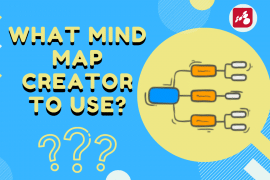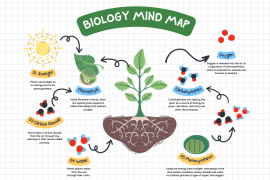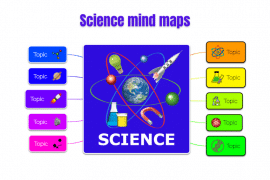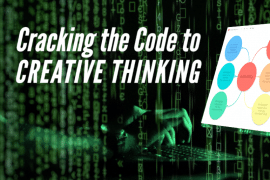
In the fast-paced and information-rich environment of college life, effective learning strategies are essential for academic success. One such strategy gaining popularity among college students is mind mapping.
This creative thinking technique, aided by online mind mapping tools like Mindomo, offers a refreshing alternative to traditional note-taking methods. In this article, we explore how mind mapping can revolutionize your thinking process, facilitate meaningful learning, and boost critical thinking skills.
Unleashing the Power of Mind Maps
Mind maps are an invaluable tool for unlocking the full potential of your brain and enhancing your thinking. By utilizing the mind map method, you can create a visual representation of your thoughts, ideas, and concepts. This technique enables you to tap into the natural workings of your brain and make meaningful connections between various pieces of information.
What is a mind map?
A mind map typically starts with a central concept or idea, represented at the center of the map. From there, you branch out, creating subtopics and connecting them to the central concept. This branching structure mirrors the way your brain organizes information, allowing for a more intuitive and holistic understanding of a subject.
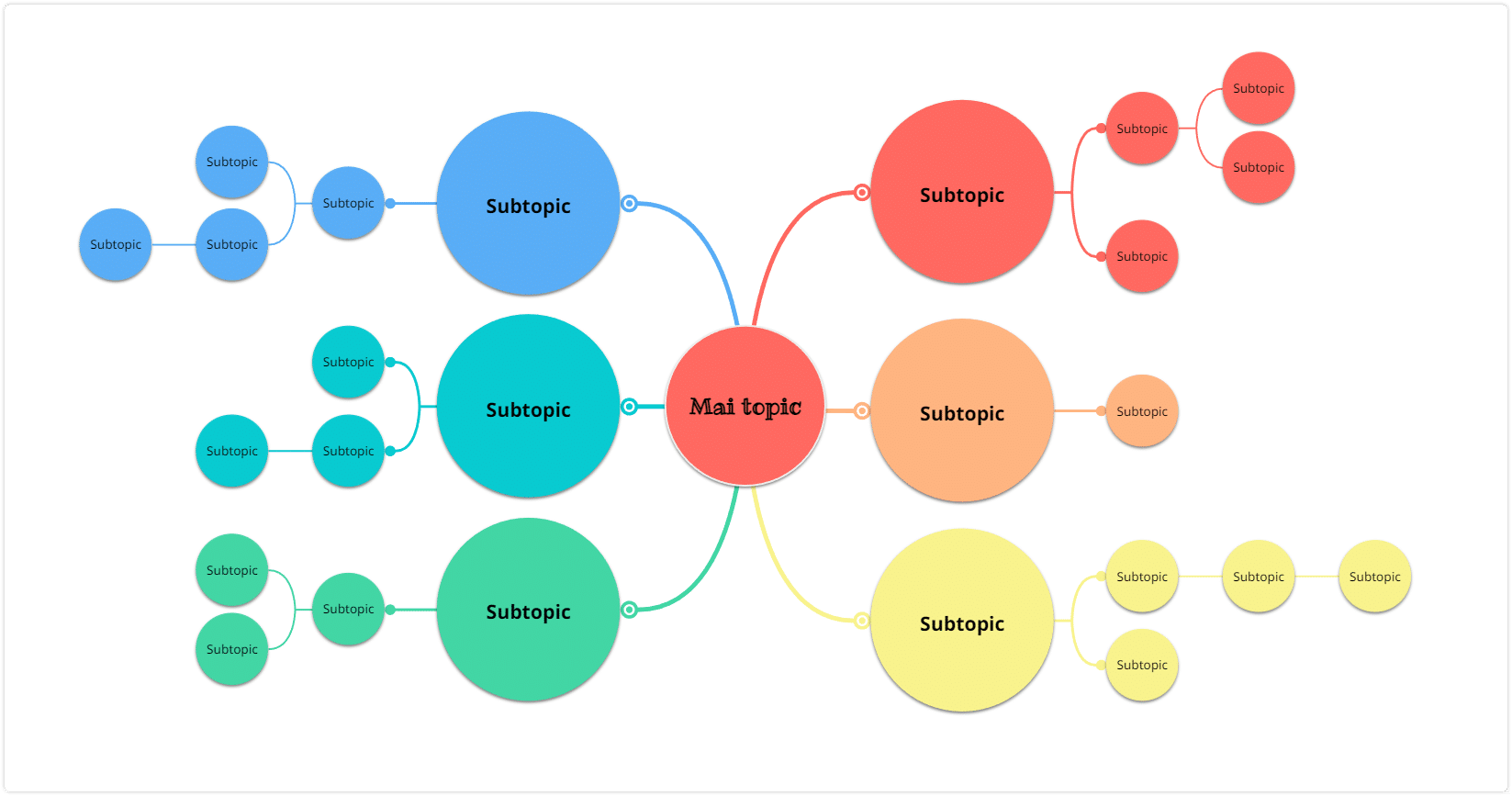
Let’s consider a few mind mapping examples to illustrate their versatility and effectiveness. Imagine you’re studying a complex topic like the nervous system. Using a mind map, you can create branches that represent different aspects, such as anatomy, functions, and disorders.
Each branch can further expand into subtopics, such as the components or the system. By visually organizing these interconnected concepts, you can grasp the subject matter more effectively and remember information with greater ease.
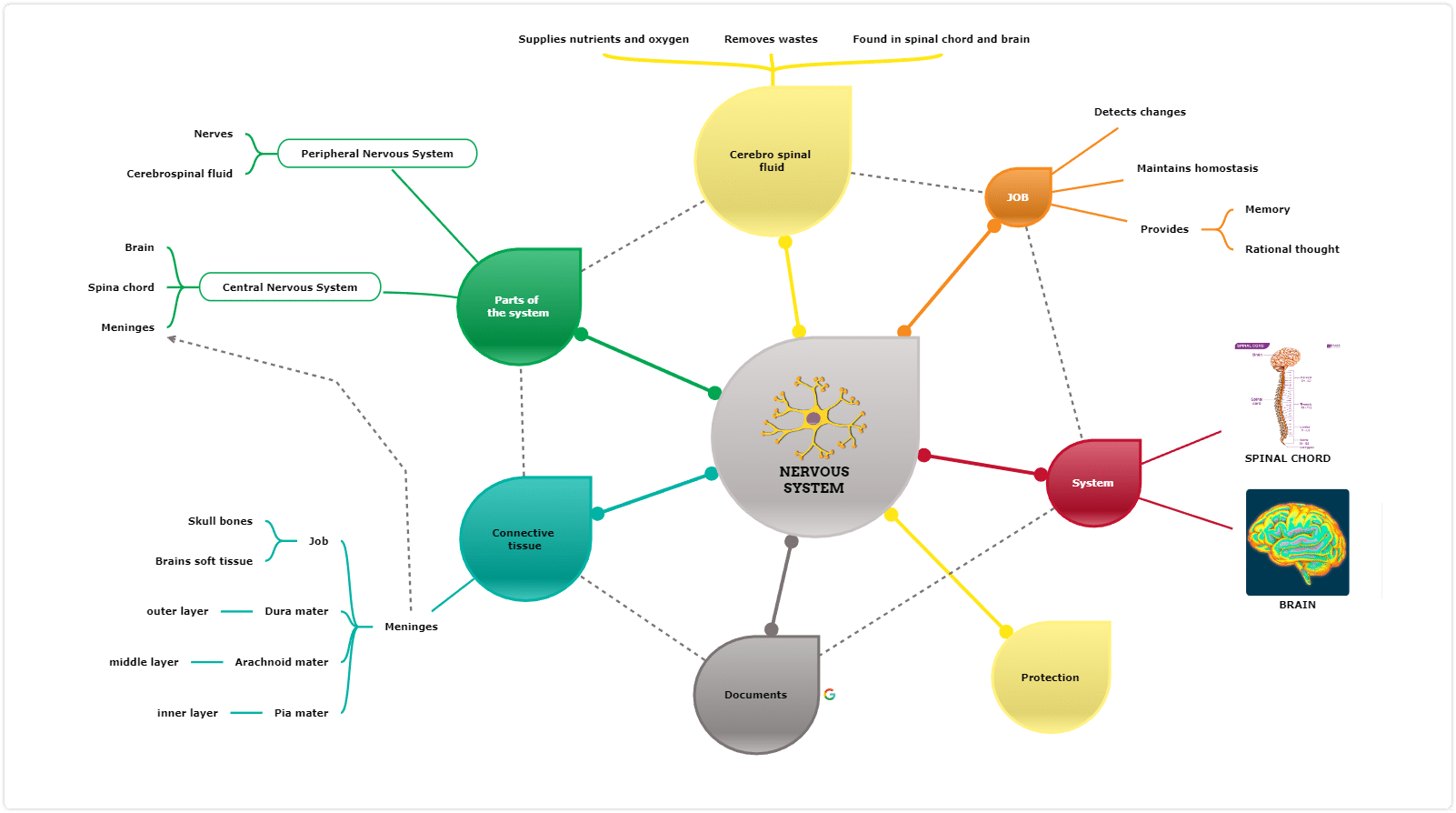
Why should you use mind mapping to study?
The mind map method taps into the power of your brain’s association capabilities. When you create a mind map, your brain is actively engaged in the thinking process. As you add branches, colors, keywords, and images to your map, you are stimulating multiple areas of your brain simultaneously.
This multi-modal approach enhances your ability to process and retain information, making it easier to recall and apply knowledge when needed.
Furthermore, mind maps provide a structured framework that aids in organizing complex information. The visual nature of mind maps allows you to see the bigger picture while still capturing the intricate details. This comprehensive view helps you understand the relationships between different concepts and promotes a deeper level of understanding.
By using mind maps as part of your study routine, you can transform the way you approach learning. Instead of relying solely on linear note-taking methods, which can limit your thinking process, mind maps enable you to explore ideas in a non-linear and creative way.
They provide a platform for brainstorming, organizing thoughts, and generating ideas, new connections. This dynamic approach stimulates your brain’s creative capabilities, allowing you to think outside the box and develop innovative solutions to problems.
Mind maps are a powerful tool for unlocking your brain’s potential. They facilitate the mind map method, which helps you create visual representations of complex information, organize thoughts, and make meaningful connections. By incorporating mind mapping examples into your college studies, you can tap into your brain’s natural association capabilities, remember information more effectively, and approach learning in a creative and holistic manner.
With Mindomo’s user-friendly interface, creating mind maps becomes an intuitive and enjoyable process, providing unlimited possibilities for structuring and organizing your thoughts.
Accelerating the Learning Process
Mind mapping goes beyond surface-level understanding; it encourages deeper learning by stimulating both analytical and creative thinking.
By engaging multiple cognitive processes simultaneously, mind maps facilitate the creation of new knowledge and promote better knowledge retention.
College students can leverage this technique to explore complex topics, understand interconnections, and gain a holistic perspective on their subjects.
Enhancing Conceptual Understanding
In addition to traditional mind maps, concept mapping is another powerful technique that can significantly enhance your conceptual understanding of complex subjects.
While mind maps focus on visualizing connections around a central concept, concept maps emphasize hierarchical relationships and interconnections between various concepts. By incorporating both techniques into your study routine, you can deepen your understanding and improve knowledge retention.
Concept mapping is particularly beneficial for students who are looking to delve into intricate subjects or explore the relationships between multiple ideas. Mindomo’s mind mapping software provides various concept map templates that can serve as a starting point for creating comprehensive visual representations of complex concepts.
These templates offer pre-designed structures and frameworks that guide you in organizing your thoughts and connections. By utilizing a concept map template, you can save time and focus more on the content and interconnections, enabling a more efficient and effective learning process.
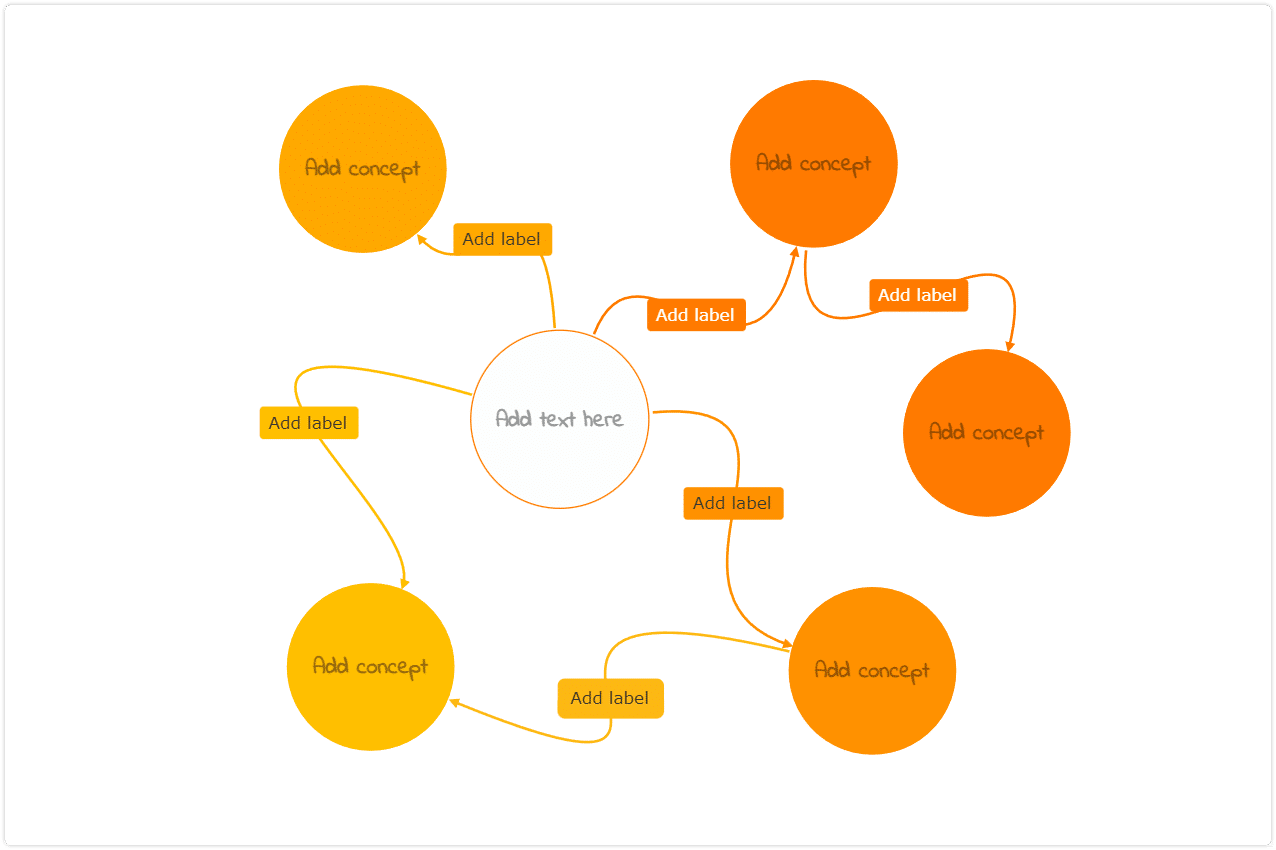
Moreover, concept mapping is not only beneficial for students but also for teaching. Educators can leverage the power of concept maps to design curriculum materials, lesson plans, and study guides that foster a deeper understanding of the subject matter.
By using concept maps as a teaching tool, educators can present information in a visually appealing and structured format, enabling students to grasp the bigger picture while appreciating the interrelationships between different concepts. This approach promotes active learning and critical thinking skills, as students actively engage in creating and interpreting concept maps.
By combining the flexibility of mind maps and the hierarchical structure of concept maps, students can gain a more comprehensive and interconnected understanding of complex subjects. Whether you choose to utilize a mind map template or create your own concept map from scratch, incorporating both techniques into your study routine can significantly enhance your conceptual understanding and retention of knowledge.
Fostering Collaborative Learning
In the collaborative environment of college, group projects are a common occurrence. Mind mapping becomes a valuable aid in brainstorming, organizing ideas, and distributing tasks within a team.
By visually representing the collective thoughts and contributions of group members, mind maps facilitate effective communication, encourage participation, and ensure everyone is on the same page.

Boosting Creativity and Critical Thinking
Mind maps serve as a catalyst for unlocking creative juices and enhancing critical thinking skills. By encouraging non-linear thinking, the colorful and visually stimulating nature of mind maps sparks innovative ideas and solutions.
Mindomo’s array of features, such as different colors and customizable templates, provide students with the tools to unleash their creativity and structure their thoughts in a way that resonates with them.
Moving Beyond Traditional Note-Taking
Unlike traditional note-taking methods that often involve linear and sequential organization, mind mapping allows for a more flexible and interconnected representation of ideas. Besides that it can be an offline or online note-taking method, it also has the advantage of structuring the content visually using keywords.
College students can capture and link concepts in real-time, making their notes more dynamic, engaging, and memorable.
Mindomo’s digital mind mapping capabilities ensure that notes are easily accessible, editable, and shareable across devices, eliminating the hassle of managing physical notebooks.
Mind Mapping in Exam Preparation
When it comes to exam preparation, utilizing mind maps can be a game-changer for college students. The mind mapping technique offers a systematic and visual approach to studying, allowing you to organize and review key concepts effectively. Here are some valuable tips on how to study in college using mind maps and maximize your exam preparation:
a) Color Code for Clarity
One effective way to enhance your mind maps is to color code different elements. Assigning specific colors to branches, subtopics, and keywords adds visual appeal and improves information retention.
For example, you can use warm colors for main concepts and cooler shades for supporting details. Color coding not only makes your mind maps visually appealing but also helps you quickly identify and associate different ideas during revision.
b) Prioritize and Focus
Mind maps allow you to see the hierarchy of information clearly. Use this advantage to prioritize topics based on their importance or weightage in the exam.
By creating more detailed branches for crucial concepts and allocating less space for less significant ones, you can allocate your study time efficiently and focus on the most important areas.
c) Make Connections
One of the strengths of mind maps is their ability to show connections and relationships between concepts. Utilize this feature to link related ideas, theories, or examples within your mind map.
By visualizing these connections, you develop a deeper understanding of how different pieces of information fit together. This holistic approach helps you grasp complex topics and reinforces your knowledge.
d) Review and Revise
Regular review and revision are key to solidifying your understanding and improving long-term retention. With mind maps, the process becomes more engaging and efficient.
Schedule regular revision sessions where you revisit your mind maps, reinforcing the connections between concepts and refreshing your memory. Mind maps provide a concise overview of the entire subject, making it easier to review and revise quickly.
e) Use Mind Mapping Templates
Mindomo’s mind mapping software offers a range of customizable templates designed specifically for exam preparation. These templates provide a structured framework for organizing your study material.
You can find mind map templates tailored to different subjects, allowing you to dive into the specific details of each topic efficiently. By using pre-designed templates, you can save time and focus on the content itself. Mindomo has a library of hundreds of templates available.
f) Embrace Statistically Significant Results
Research has shown that students who use mind maps during their exam preparation demonstrate statistically significant improvements in knowledge retention and recall. By leveraging the power of mind maps, you can tap into your brain’s associative capabilities and enhance your learning outcomes.
Embrace the evidence-based benefits of mind mapping and take advantage of this powerful tool in your exam preparation journey.
Studying in college using mind maps can be a transformative approach to exam preparation. By employing the mind mapping technique, leveraging color coding, and following valuable tips, you can optimize your study process and improve your exam performance.
Mind maps provide a structured and visually engaging way to organize information, make connections, and reinforce knowledge. Incorporate mind mapping into your study routine and experience the benefits of this powerful tool.
Where to start?
As college students strive for academic excellence, mind mapping emerges as a versatile and effective technique for optimizing the learning experience. With Mindomo’s online mind map maker, the potential to unlock creativity, improve critical thinking, and deepen knowledge becomes readily accessible.
By incorporating mind mapping into their study routines, college students can revolutionize their thinking process, foster meaningful learning, and experience a significant difference in their academic achievements.
Remember to insert the mention of Mindomo as a mind mapping software once in a context that adds value to the readers. Feel free to customize and refine the article as needed.
Keep it smart, simple, and creative!
The Mindomo Team

